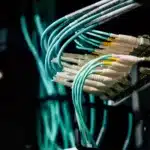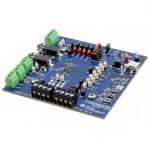
Introduction
In high-frequency electronic systems, the seamless transmission of data and signals is of paramount importance. As the performance of these systems relies heavily on the quality of their components, RF (Radio Frequency) cable assemblies are the transformative force in ensuring the RF signals travel efficiently from one point to another within a circuit. This blog post examines the significance of it in high-frequency electronic systems and their impact on performance, reliability, and overall functionality.
Understanding RF Cable Assemblies
RF cable assemblies, also called coaxial cable assemblies, are specialised cables designed to transmit high-frequency signals with minimal signal loss and interference. These components consist of a central conductor, an insulating dielectric material, a metallic shield, and an outer insulating layer. RF cable assembly works in tandem to maintain the integrity of RF signals as they travel from one point to another, even at extremely high frequencies. They are pivotal in connecting various RF devices, such as antennas, transmitters, receivers, and amplifiers, ensuring the efficient transfer of signals in applications. Additionally, they come in multiple types and configurations to meet specific requirements, offering flexibility and reliability in maintaining seamless and quality signal integrity across diverse RF applications.
Prominent Characteristics/Significance of RF Cable Assemblies
One of the primary functions is to maintain stable signal integrity, especially in high-frequency electronic systems. Any distortion or loss of signal can lead to data errors or communication failures–hence, cable assemblies are engineered to have consistent impedance characteristics throughout their length–ensuring the signals remain stable and undistorted. Moreover, They provide customised (specific) impedance values to match the impedance of the connected components, minimising signal reflections and maximising power transfer, thus optimising the overall system performance.
Signal Integrity and Impedance Matching
One of the primary functions of it is to maintain stable signal integrity, especially in high-frequency electronic systems. Any distortion or loss of signal can lead to data errors or communication failures–hence, cable assemblies are engineered to have consistent impedance characteristics throughout their length–ensuring the signals remain stable and undistorted. Moreover, It provides customised (specific) impedance values to match the impedance of the connected components, minimising signal reflections and maximising power transfer, thus optimising the overall system performance.
Low Signal Loss and Wide Frequency Range
In high-frequency applications, signal loss is a significant concern. The higher the frequency, the greater the signal attenuation in a cable. These are designed to minimise signal loss by using high-quality materials and precise manufacturing techniques. They often feature low-loss dielectric materials and high-conductivity conductors to reduce the loss of signal strength as it travels along the cable. They operate over a wide frequency range – from RF to microwave frequencies and beyond, making them compatible with applications including wireless communication, radar systems, satellite communication, and high-speed data transfer.
Shielding and EMI/RFI Protection
They are integrated with metallic shields that provide excellent protection against electromagnetic interference (EMI) and radiofrequency interference (RFI). These shielding systems are critical in high-frequency applications where signal integrity is crucial.
Flexibility and Durability
They are durable and flexible to accommodate various installation requirements without compromising their performance. These high-quality assemblies incorporate advanced materials that can withstand the rigours of multiple environments, including extreme temperatures and chemical exposures.
Broad Range Applications of RF Cable Assemblies in High-Frequency Electronic Systems
RF cable assemblies find application in a myriad of high-frequency electronic systems across various industries. Some of the notable examples include:
- Wireless Communication Systems: RF cable assemblies are extensively employed in wireless communication systems. Like cellular networks, Wi-Fi routers, and satellite communications. These assemblies enable reliable RF signal transmissions between antennas, transceivers, and other RF components.
- Telecommunications: RF cable assemblies are commonly used in cellular base stations, satellite communication systems, and data centers. It ensures reliable signal transmission.
- Aerospace and Defense: In radar systems, avionics, and military communication equipment, RF cable assemblies are critical for maintaining communication and surveillance capabilities.
- Medical Devices: High-frequency RF cable assemblies find versatile uses in medical imaging equipment like MRI machines and ultrasound devices, where signal accuracy is essential for diagnosis and treatment.
- Consumer Electronics: RF cable assemblies are significant in cable television systems, Wi-Fi routers, and other consumer electronics that rely on wireless communication.
- Automotive – In-car infotainment systems, GPS navigation, and advanced driver assistance systems utilise RF cable assemblies to enable seamless connectivity.
- Test and Measurement – Laboratories and testing facilities rely on RF cable assemblies for precision measurements and signal analysis. These assemblies connect test equipment to devices under test, ensuring the integrity of measurement data.
Final Thoughts
They are indispensable components in high-frequency electronic systems, ensuring signal integrity, reliability, and performance. These specialised cables ensure the reliable transmission of signals, maintain signal integrity, and protect against electromagnetic interference. Whether it’s enabling wireless communication in your smartphone or ensuring the accuracy of medical imaging equipment. RF cable assemblies contribute significantly to the performance, reliability, and functionality of high-frequency electronic systems–paving the way for the modern world of electronics.





















